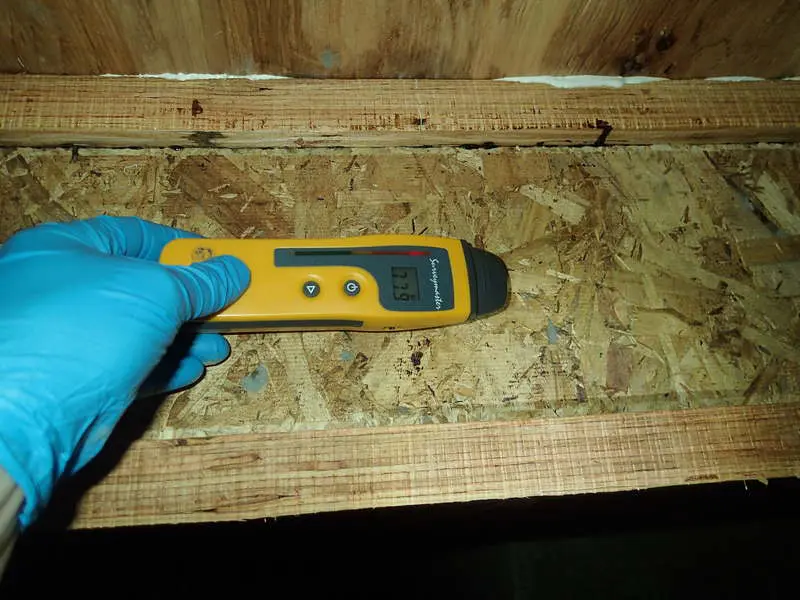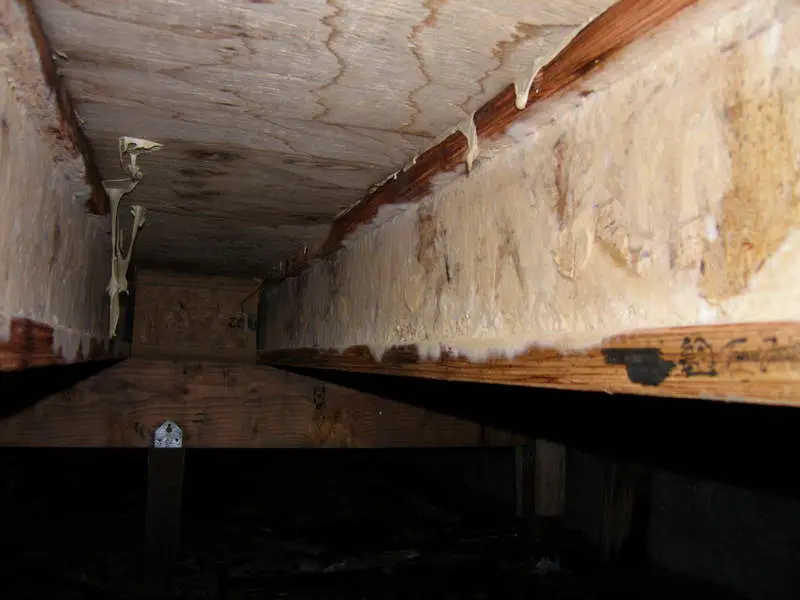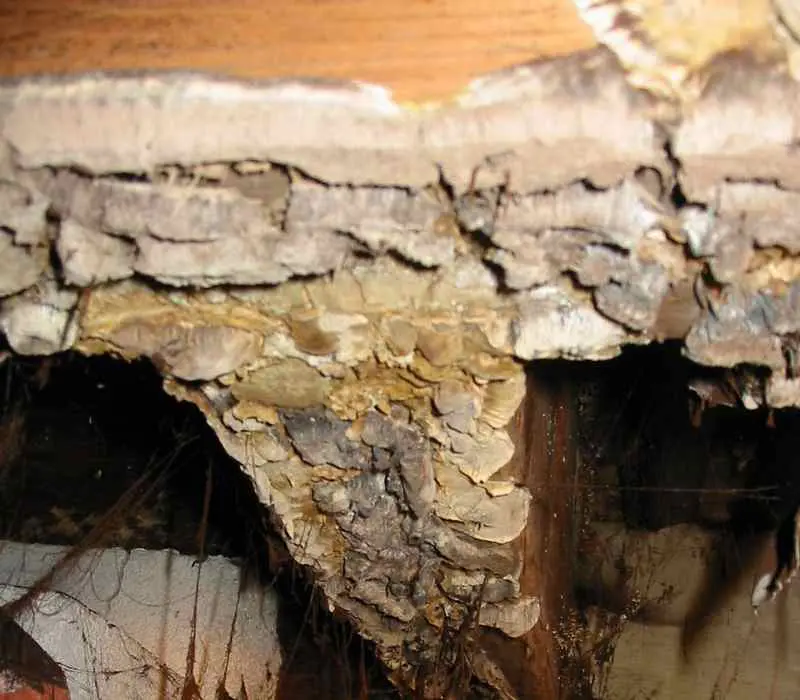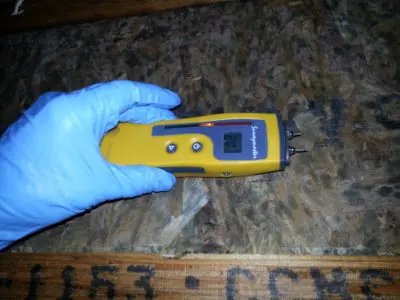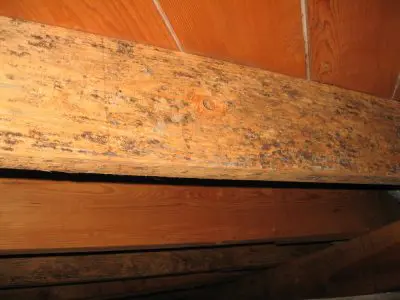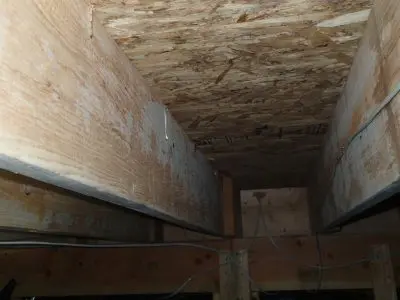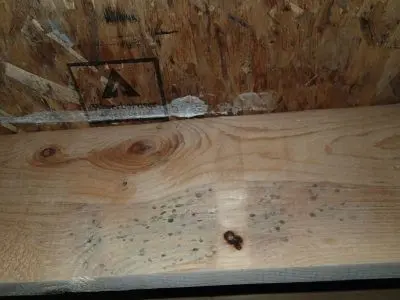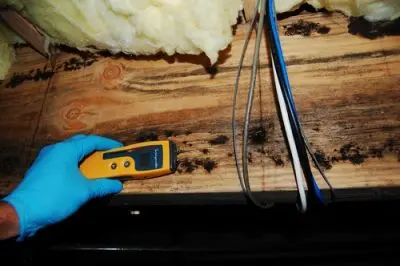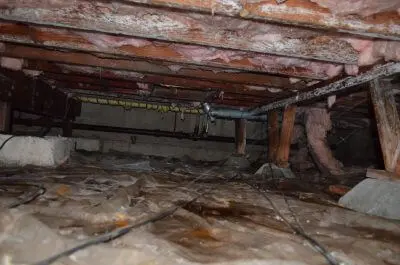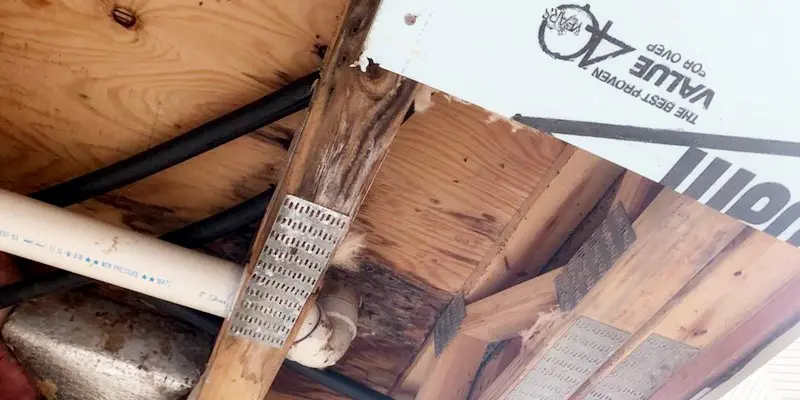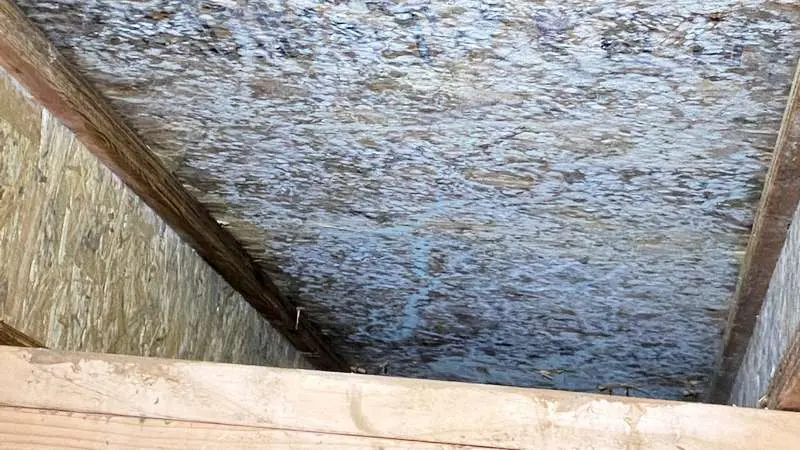Mold Growth on Joists in Crawlspace
How to determine the cause
First – is it from the initial construction or a more recent issue?
A surprising amount of crawl space mold issues are due to rain and snow during the original construction of the home. In rainy climates such as Seattle, it’s difficult to build a home in the winter without enduring at least one storm before the roof is installed. This leads to saturation of the subfloor and floor joists. Unless the builder is on top of things, mold growth often ensues.
Thankfully, mold growth from the original construction rarely causes long term issues. Yes, it’s unpleasant to think of mold lurking in your crawl space, but it is important to remember it has long since gone dormant. The mold will not regrow unless new moisture is introduced to the materials. Without a fresh water leak or some other failure, this will not occur.
So – how do you determine if the mold growth is from the original construction?
Look at the location of the growth. Is the growth occurring behind the insulation? Is it found in numerous areas throughout the crawl space? If so, this is very likely from the original construction. Mold growth behind the insulation is periodically from a leaky toilet or shower, but this is localized and accompanied by visible damage. If the growth is spotty but systemic, it’s nearly always due to saturation from when the home was built.
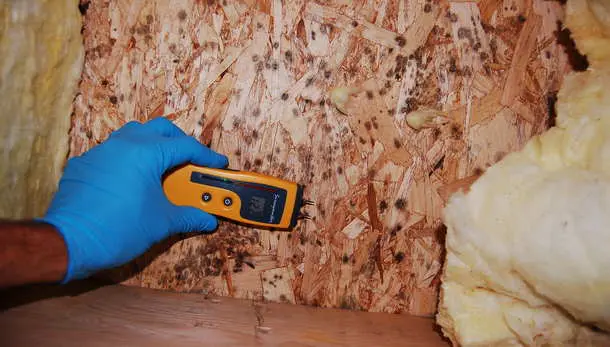
Notice the mold is growing behind the insulation. A clear indication of construction mold growth.
Is the mold only growing on the exposed portion of the joists? Pull back the insulation and examine the growth. Is there a clear line where the mold stops growing and it coincides with the area the insulation covered? This is not from the original construction. This is caused by humidity (missing vapor barrier, standing water, leaky pipe, etc.)
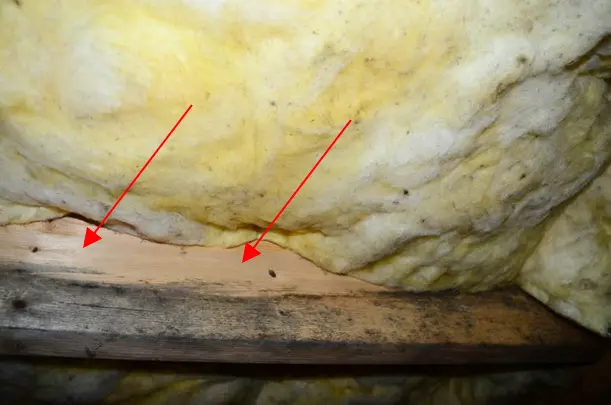
Notice the lack of mold growth where the insulation has been pulled back.
[Note – this primarily applies to climates with cool winters and low summer humidity (i.e. the western US). Homes in hot, humid climates can suffer from crawl space mold due to condensation occurring on materials cooled by air conditioning.]
How to prevent mold growth in new construction
In an ideal world, the crawl space would never suffer exposure to rain or snow. While a nice idea, this is impossible to guarantee. The key to prevention is air flow and constant monitoring. Heat drying the crawl space works very well, but the cost of the fuel/energy required is fairly high. Depending in the saturation and outside temperature, an indirect diesel fired heater could burn for several days before bringing the materials under 20%. However, if the timeline is tight and the saturation is moderate, diesel heaters are very effective.
In many cases air flow via fans is sufficient. Cut a few access holes in the subfloor and point a fan downward into the crawlspace. The direction of the air flow isn’t terribly important. Your goal is to simply rapidly exchange the air in the crawlspace. This is accomplished by either forcing air out the crawl vents or drawing air inward.
This must be coupled with the installation of the vapor barrier. Many contractors wait until the end of construction to install the VB. They don’t want HVAC and plumbing contractors messing up clean plastic. The cost of mold remediation far exceeds the cost of a 2nd vapor barrier if the first one is dirty. It’s simply impossible to dry out the subfloor when the dirt below is saturated. The VB is essential for directing the dry out action of the fans (or heaters) toward the joists and subfloor. Otherwise, you’re simply paying a lot of money to dry out the dirt.
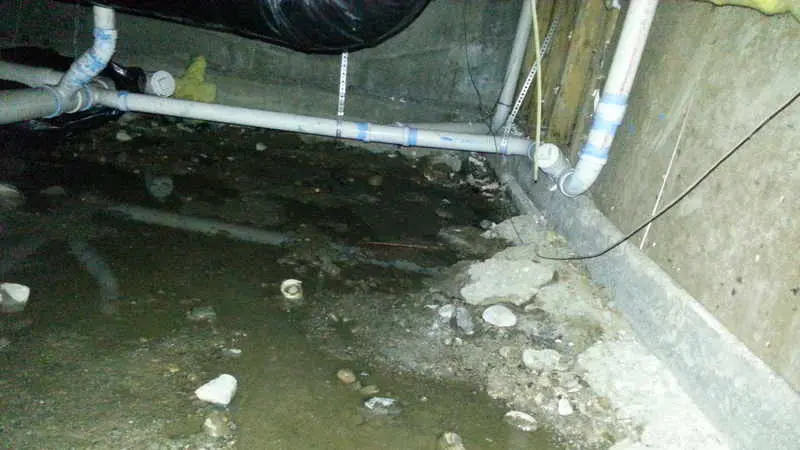
It’s hard to dry out floor joists without a vapor barrier.
Photos from recent crawl space inspections
Elevated moisture on a TJI joist
Heavy mold growth on TJI joists from new construction
While this is clearly an extreme case, mold growth on the joists is fairly common if a home is built during the winter months. Thankfully, even this level of mold growth can be addressed without replacing the joists (though the amount of work required is still substantial).
Wood rot on bottom of joists
Amazingly, this was not due to direct saturation, but rather extreme humidity in the crawl space. This kind of damage is extremely rare.
Project Report > Inspection for Mold on Joists
Mold Growth:
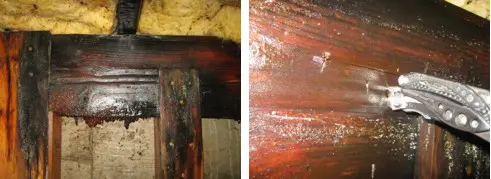
Water Damage on Subfloor in Crawlspace
- Inspection of crawlspace revealed moderate mold growth throughout significant areas of subfloor and floor joists.
- Significant areas of rot were noted in framing along exterior wall, the inspector was able to pass a 3.5” knife blade completely into the rim-joist along the back foundation wall.
Insulation:
- Damaged – Insulation damaged throughout the crawlspace area and must be removed.
- At the time of inspection all of the under floor insulation was saturated and severely damaged.
Moisture:
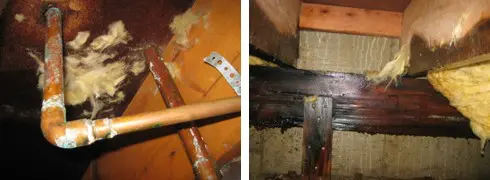
Mold Growth on Joists in Crawlspace
- Elevated moisture noted throughout significant portions of the framing and/or subflooring. It is necessary to thoroughly dry the framing and subflooring prior to the application of encapsulant.
- Moisture content and distribution is consistent with elevated levels of temperature and humidity for several months. This condition is often caused by a hot water leak, but in this case is likely secondary to a faulty dryer exhaust duct.
- The home owner had removed deck boards, and regarded sol to ensure no soil or landscaping materials contact the siding below the deck. This condition may have contributed to localized wood rot, but was not a significant factor in the moisture and rot noted on inspection.
Leaks:
- No obvious plumbing leaks were observed on inspection of the crawlspace. There is a possibility that a leaking hot water line will be found once the insulation has been removed.
Vapor Barrier:
- Damaged – Vapor barrier damaged and missing in areas, allowing excessive moisture transfer from damp soil into crawlspace framing.
- Contaminated- Vapor barrier shows evidence of past flooding, or is extremely soiled.
Ventilation:
- Current ventilation amount is adequate to exhaust normal amounts of humidity, but vents appeared to be limited to a single side of the home.
- The existing ventilation will likely be sufficient for usual situations, but may be inadequate to deal with higher than normal volumes of humidity.
Ducting:
- Dryer exhaust ducting is leaking in several places and allowing excess humidity and heat to build up in the crawlspace.
Other Contamination:
- Moisture or carpenter ants are likely to be uncovered during the removal of insulation and affected lumber.
Trash and Debris:
- The crawlspace is currently free from excessive amounts of trash and construction debris.
*Heads up – I earn a small commission on sales through Amazon links. This helps cover the expense of running the website (and answering your questions!)
Got a question? Ask it here and we'll post the answer below
Good Afternoon, we have had our toilet leaking for 18months, in your opinion can you tell me if there seems to be mould on the would in the photo. Thanks.
Yes, this is very likely mold growth. It’s fairly limited in scope, so the impact on indoor air quality is likely very minimal. It can be cleaned via a mildicide application and HEPA vacuuming and/or sanding.
We are allergic to mold and found this in our crawl space throughout the whole house. Drywall and insulation not yet installed.
Yes, this is very likely mold growth. Unfortunately, this is fairly common during new construction. Before the roof is installed, the subfloor is saturated with rain water. Unless the builder proactively dries out the crawlspace, mold growth can occur. Thankfully, the mold growth will stop once the subfloor returns to normal moisture levels. There is no need to replace the subfloor. The mold can be treated via a water based mildicide.

